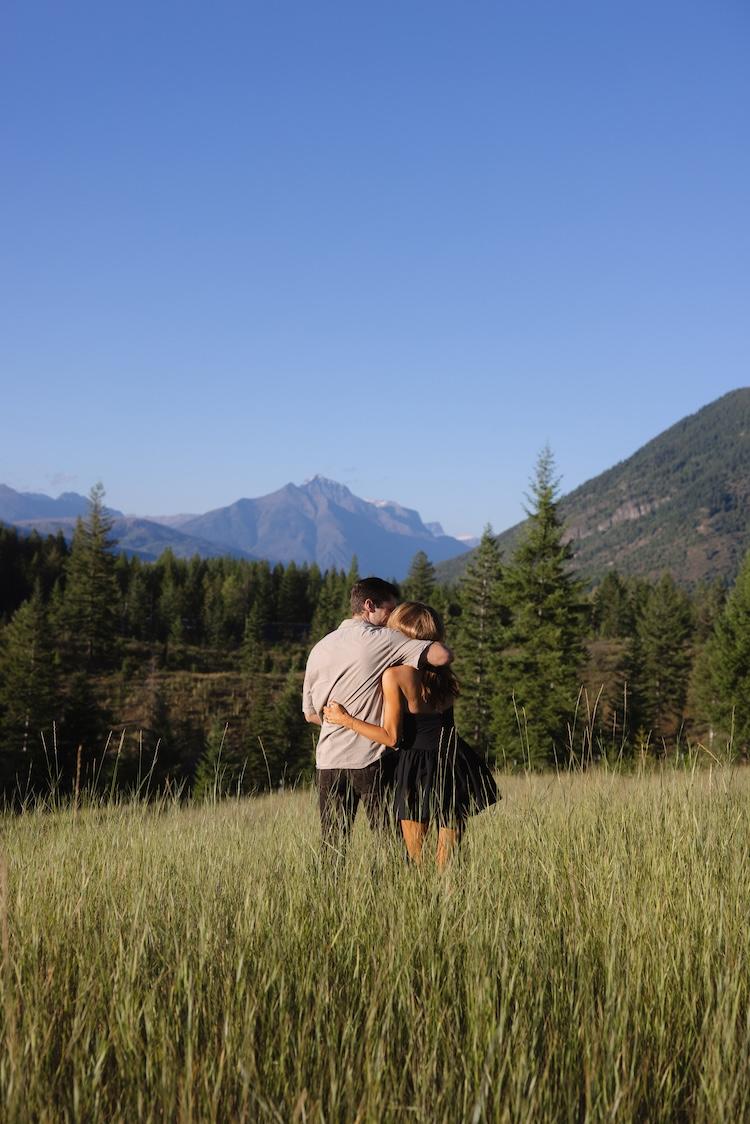
Glacier National Park offers some of the most breathtaking hiking experiences in North America. With over 700 miles of trails, you'll find options for every skill level and interest. The park's diverse landscape features rugged mountains, pristine lakes, lush forests, and abundant wildlife.
From easy walks to challenging backcountry treks, Glacier's trails showcase the park's natural beauty. You can explore iconic destinations like Hidden Lake, Grinnell Glacier, and the Highline Trail. Each path provides unique views of glacial valleys, alpine meadows, and towering peaks.
Overview of Glacier National Park

Glacier National Park spans over 1 million acres in Montana's Rocky Mountains. You'll find pristine forests, alpine meadows, rugged mountains, and spectacular lakes within its boundaries. The park is home to over 700 miles of trails, making it a hiker's paradise.
The park's diverse ecosystems support a wide variety of wildlife. You might spot grizzly bears, mountain goats, bighorn sheep, and many other unique animals during your visit.
Glacier's iconic Going-to-the-Sun Road offers breathtaking views as it winds through the park's interior. This 50-mile route crosses the Continental Divide at Logan Pass, reaching an elevation of 6,646 feet.
You can explore Glacier's beauty year-round. Summer offers ideal hiking conditions, while winter transforms the landscape into a snowy wonderland perfect for cross-country skiing and snowshoeing.
Lodging options within the park range from historic chalets to modern hotels. Campgrounds are also available for those who prefer a more outdoorsy experience.
Top Trails in Glacier National Park

Glacier National Park offers breathtaking hiking opportunities with stunning mountain vistas, pristine lakes, and diverse wildlife. These top trails showcase the park's natural beauty and provide unforgettable experiences for hikers of all skill levels.
Grinnell Glacier
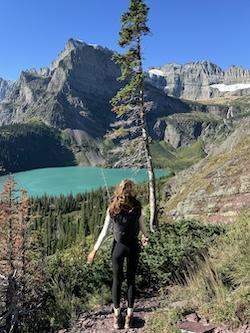
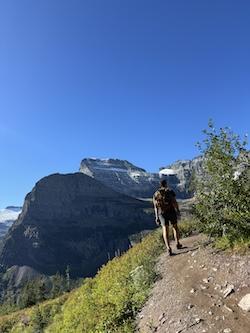
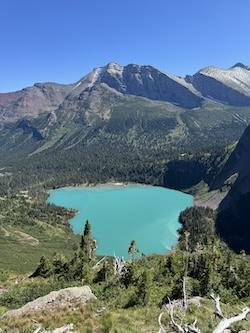
The Grinnell Glacier trail is a challenging but rewarding 10.6-mile round trip hike. You'll gain 1,600 feet in elevation as you traverse through scenic alpine meadows and past beautiful blue lakes.
Along the way, you'll encounter stunning views of the Grinnell Valley and its surrounding peaks. Keep an eye out for mountain goats and bighorn sheep on the rocky slopes.
Although Grinnell Lake is one of the most stunning views you will ever see, I highly recommend going all the way up to the glacier. I mean, how often do you get to see a glacier in your lifetime?
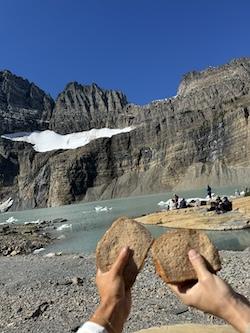
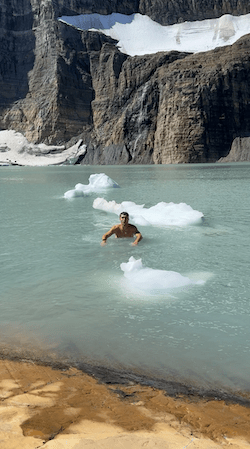
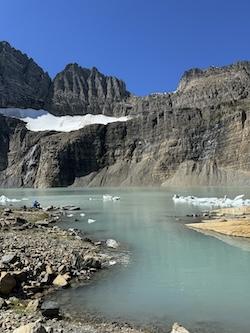
The trail comes to an end when you get to the glacier, which is the perfect spot to enjoy a sandwich and a nice break after the uphill trek.
Tips You Need to Know:
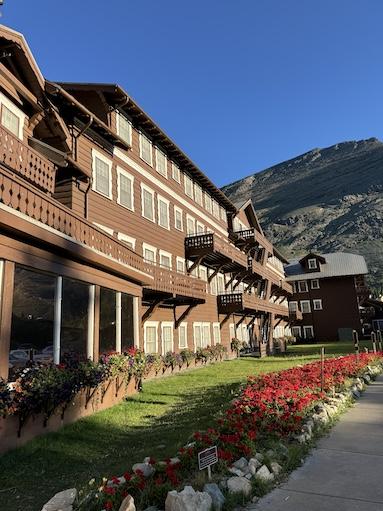
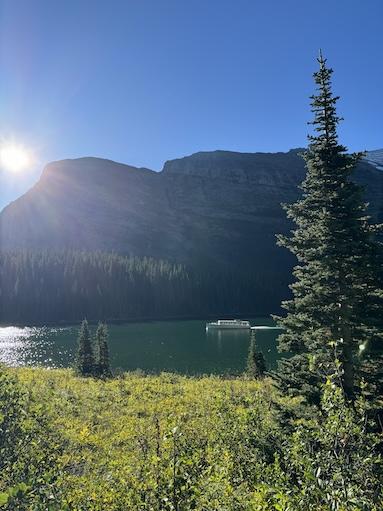
For best parking, go to Many Glacier Hotel within the park. You can park in the hotel's parking lot and there are even tons of guides inside to help you figure out which way to go. You'll want to get there early to start out on the trail in the morning and have ample time to stop and enjoy the scenery on the way up.
Also, be sure to bring plenty of water and snacks. This is not a trail that you can just head on out with one bottle of water on! You will want to bring many backups and plenty of snacks to keep you energized during the hike.
Lastly, be prepared for changing temperatures and many different weather conditions. You'll want to layer up, as the temperatures are vastly different during this hike. In the morning, it will be chilly but warm up as the sun comes out. However, at the top of the glacier, it gets really cold again with the wind off of the lake! I wore biker shorts under my leggings, a tank top under a longsleeve shirt, and puffy vest on top. It was perfect for all of the different temperatures we experienced.
Highline Trail
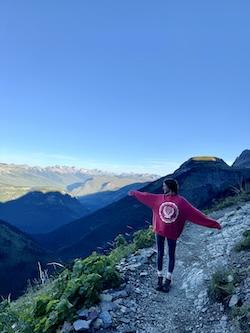
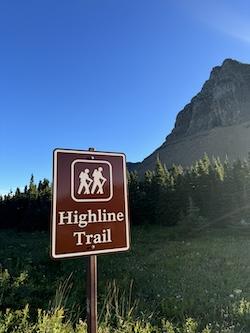

The Highline Trail is an 14-mile one-way trek that offers some of the most spectacular views in the park. You'll follow the Continental Divide, with steep drop-offs and expansive valleys throughout.
Beginning at Logan Pass, the trail hugs the Garden Wall, providing panoramic views of the surrounding mountains and valleys. Wildflowers cover the landscape in summer, adding splashes of color to the rugged terrain. You can also spot wildlife such as marmots, mountain goats, and even the occasional grizzly bear.
There are many options for taking different paths while on this trail. If you aren't a beginner and feel up for it, I highly suggest doing the whole 14 mile one way trek! You'll feel so accomplished and get to see so many different parts of the park on the hike.
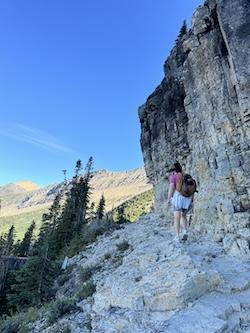

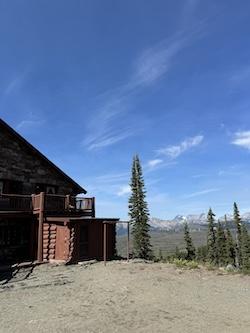
About 7 miles in, you will come to Granite Park Chalet, where you can stop, take a break, use the restroom, and eat lunch. Trust me, by the time you get here, you will have earned that break! I have never been so happy to see a building in my life lol. After you start back on the trail, there will be a couple different ways you can go. You'll eventually see a path you can take to get another view of Grinnell Glacier. However, we chose to keep going forward with the one-way hike to Loop Trailhead. Once you get all the way to the end, you'll end up at a shuttle stop, where you take the shuttle back to Logan's Pass Visitor Center to your car.
Tips You Will Need to Know:


As with Grinnell Glacier Trail, you will want to start this one early! The trail gets super crowded, especially since there are a lot of different ways to go on the trail. Also, you'll be thankful you hiked the majority of this trail before it really warmed up outside.
You'll want to park at Logan's Pass Visitor's Center in the park. BUT you should know - people get there around 4am and some even sleep in their cars in the parking lot. So, expect a crowded lot. We didn't get there quite as early as we hoped and had to park about a mile and a half away down the road. Which was fine, but not as enjoyable walking back after the 14 mile hike is over 🙂
Make sure to bring plenty of water, snacks, food for lunch, and bear spray.
Iceberg Lake Trail
The Iceberg Lake Trail is a 9.7-mile round trip hike that leads to a stunning alpine lake nestled beneath towering cliffs. You'll gain 1,275 feet in elevation as you journey through diverse terrain.
The trail starts in the Many Glacier area and winds through bear country, so carry bear spray and make noise as you hike. You'll pass through subalpine forests and open meadows filled with wildflowers in summer.
As you approach Iceberg Lake, you'll be see views of the dramatic rock walls. The lake itself often contains floating ice well into summer, creating a unique and picturesque scene.
Although we didn't get to do this hike due to time, it is on our list for when we go back. If you are only in the Many Glacier area for one full day, I'd recommend doing Grinnell Glacier Trail. However, if you find yourself with another extra day - Iceberg Lake Trail is the second favorite in Many Glacier!
Best Shorter Hikes in Glacier National Park
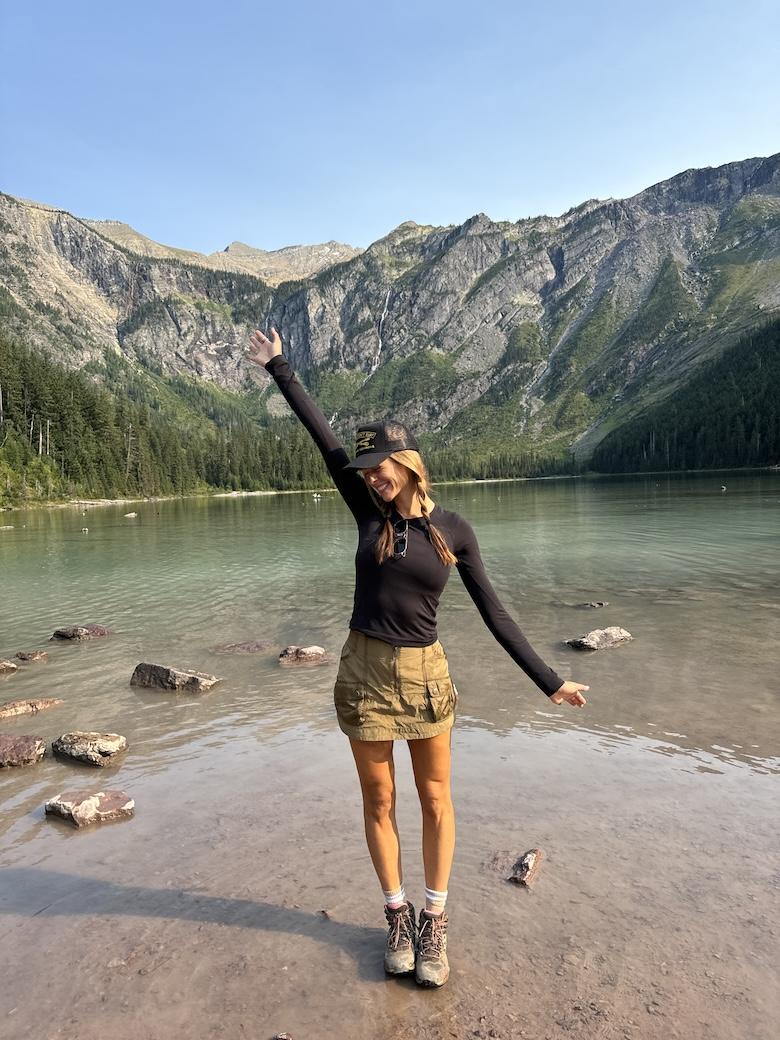
Glacier National Park offers several shorter hikes that provide stunning views and natural wonders without requiring a full day's commitment. These trails are perfect for families, beginners, or those with limited time.
Avalanche Lake
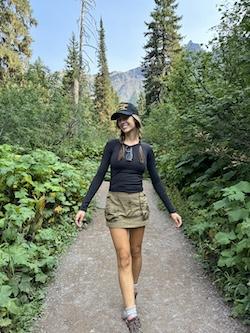
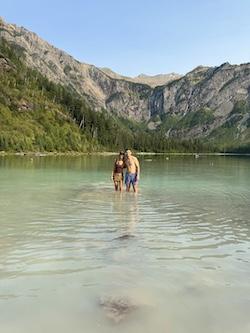
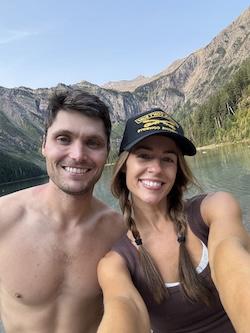
Avalanche Lake Trail is a 4.5-mile round trip hike with moderate difficulty. You'll hike through dense cedar and hemlock forests alongside Avalanche Creek. The trail gains about 730 feet in elevation.
Although it is a shorter hike, this is one you do not want to miss! If you are traveling with people of different skill levels or kids, this is the perfect morning or afternoon hike.
As you reach the lake, you're greeted by a breathtaking view of towering cliffs and waterfalls cascading into the crystal-clear waters. We even saw a bear swimming and splashing around across the lake - it was a memory I'll never forget!
The best times to visit are early morning or late afternoon to avoid crowds. The trail is usually accessible from late May to October, depending on snow conditions.
Two Medicine Trails
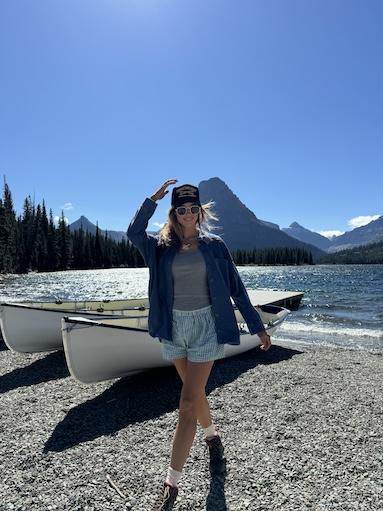
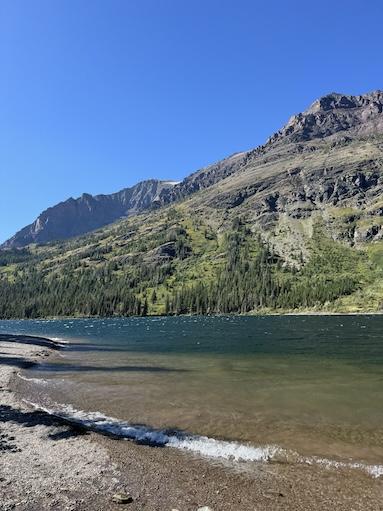
Two Medicine offers several short hikes in the Many Glacier area suitable for various skill levels. The Running Eagle Falls trail is a 0.6-mile round trip, perfect for families with young children. It leads to a unique waterfall where water seems to emerge from solid rock.
For a slightly longer option, try the 3.8-mile round trip to Aster Park Overlook. This moderately challenging trail rewards you with panoramic views of the Two Medicine area.
The Appistoki Falls trail is another short 1-mile round trip hike. It offers beautiful views of the 30-foot waterfall and surrounding mountains.
My suggestion here would be to talk to locals and find out their favorite hikes in this area. Let them know how much time you have and they can help guide you on which of the many trails would be best!
Trail of the Cedars
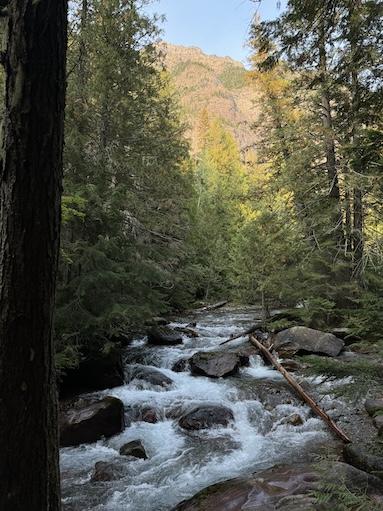
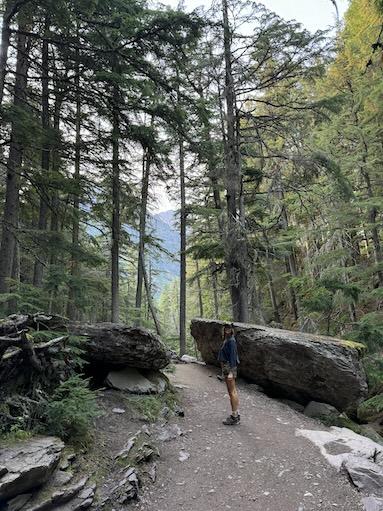
This 0.7-mile loop is right by the start of the Avalanche Lake Trail and is wheelchair accessible, featuring a raised boardwalk. You'll wander through an ancient forest of western red cedars and western hemlocks, some over 500 years old.
The trail offers interpretive signs explaining the unique ecosystem. Halfway through, you'll reach a viewing platform overlooking Avalanche Gorge, where turquoise waters rush through a narrow rock canyon.
This trail is open year-round and is particularly beautiful in early summer when wildflowers bloom along the path.
Hidden Lake Overlook
Starting from Logan Pass Visitor Center, this 2.7-mile round trip hike offers some of the park's most iconic views. The trail begins on a paved path before transitioning to a boardwalk that protects the fragile alpine meadows.
You'll likely encounter mountain goats and possibly bighorn sheep along the way. The hike culminates at an overlook with stunning views of Hidden Lake and Bearhat Mountain.
The trail is snow-covered until mid-July most years, so take advantage if you happen to be visiting and it is accessible. We didn't have time to do this hike, but it is on my list for next time!
Must-Visit Scenic Points

Glacier National Park is known for its breathtaking views and awe-inspiring landscapes. These iconic locations are must-see's when you visit the park. You'll immediately see why!
Lake McDonald
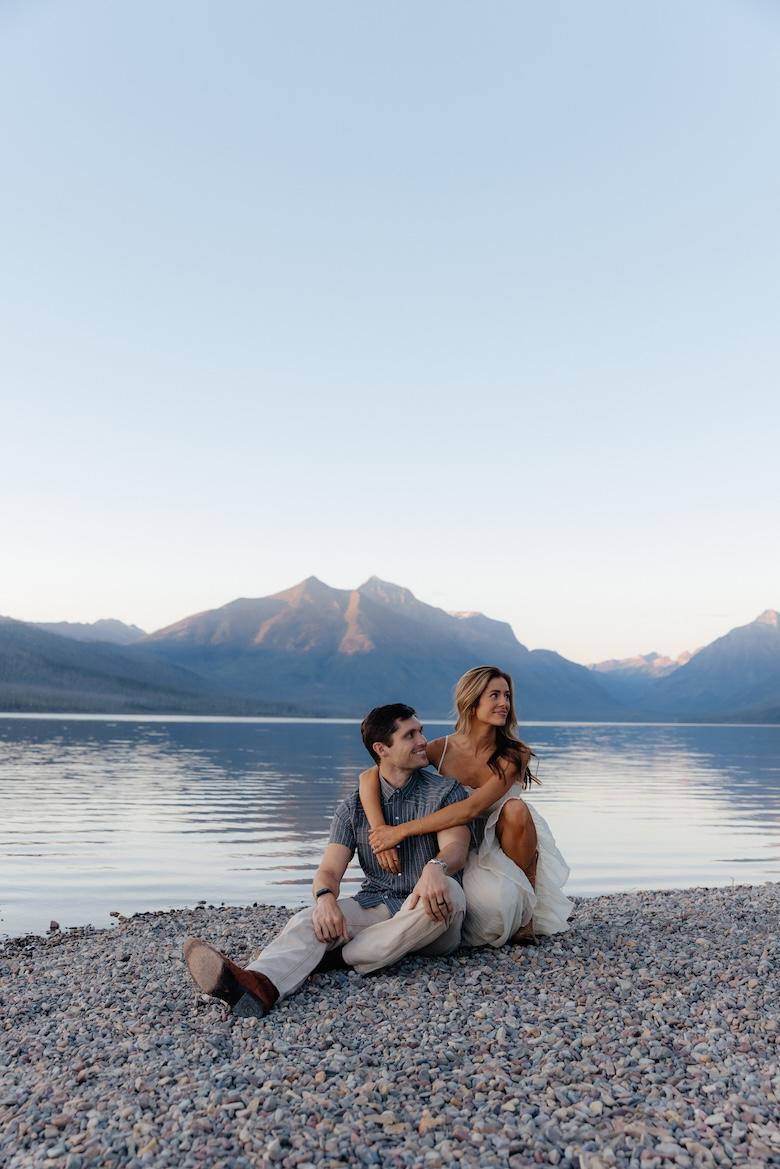
Lake McDonald, the largest lake in Glacier National Park, stretches for 10 miles. Its crystal-clear waters reflect the surrounding mountains, creating a mirror-like surface on calm days.
You'll find colorful pebbles along the shoreline, polished smooth by glacial activity. The lake's western shore offers stunning sunset views, with the sun dipping behind the peaks.
Lake McDonald Lodge, a historic Swiss chalet-style hotel, offers boat tours and kayak rentals to explore the lake.
Logan Pass
Logan Pass, at the summit of Going-to-the-Sun Road, offers panoramic views of alpine meadows and rugged peaks. At 6,646 feet, it's the highest point accessible by car in the park.
The Visitor Center here provides information on local flowers and wildlife. You'll may spot mountain goats and bighorn sheep grazing nearby.
Two popular trails start from Logan Pass:
- Hidden Lake Overlook Trail (3 miles round trip)
- Highline Trail (7.6 miles one way to Granite Park Chalet)
Many Glacier
Many Glacier, often called the "Switzerland of North America," offers some of the park's most dramatic mountain scenery. This area is home to numerous glaciers, alpine lakes, and abundant wildlife.
Swiftcurrent Lake provides a perfect reflection of the surrounding peaks. You can take a boat tour or hike the Swiftcurrent Nature Trail for varied perspectives.
Don't miss these popular hikes:
- Grinnell Glacier Trail (10.6 miles round trip)
- Iceberg Lake Trail (9.7 miles round trip)
These trails offer chances to see glaciers up close and spot wildlife like moose, bears, and mountain goats. The Many Glacier Hotel, a historic Swiss-style lodge, offers accommodations with stunning lake views that will make you feel like you're in the Alps.
Best Times to Visit for Hiking

The prime hiking season in Glacier National Park runs from July to September. During these months, most trails are clear of snow and accessible to hikers.
July and August offer warm daytime temperatures, ideal for long treks. You'll find wildflowers in bloom and alpine meadows at their most vibrant.
September, after Labor Day, brings cooler weather and fewer crowds. Fall colors start to appear, creating stunning vistas along the trails.
Early season hiking in June can be challenging due to lingering snow at higher elevations. Many high-country trails may not be fully accessible until mid-July.
Late September to early October can also provide a unique hiking experience. The park is less crowded, and you might spot wildlife preparing for winter.
Weather considerations:
- Summer: Daytime highs 60-70°F (15-21°C)
- Fall: Daytime highs 50-60°F (10-15°C)
- Sudden weather changes are common year-round
Pack layers and rain gear regardless of when you visit. Always check trail conditions and weather forecasts before setting out on your hike.
Remember to book accommodations and park passes well in advance, especially for peak summer months. Hotels and lodges fill up quickly during the busy season.
Wildlife on the Trails
Glacier National Park's trails offer incredible opportunities to observe diverse wildlife and colorful plant life in their natural habitats. Hikers often encounter iconic animals and vibrant wildflowers unique to this alpine environment.
Mountain Goats and Bighorn Sheep
You'll likely spot mountain goats and bighorn sheep on many of Glacier's high-elevation trails. These goats are well-adapted to the park's rocky terrain. Mountain goats, with their distinctive white coats, can often be seen grazing on steep cliffs.
Bighorn sheep, known for their curved horns, frequent areas like Logan Pass and Grinnell Glacier Trail. Keep your distance and use binoculars or a zoom lens for better views. These animals may approach hiking trails, but remember not to feed or disturb them.
Bear Safety Tips
Glacier National Park is home to both grizzly and black bears. When hiking, always carry bear spray and know how to use it. Make noise while walking to alert bears of your presence, especially in forests full of vegetation or near loud streams.
Hike in groups when possible and be particularly cautious in areas with bear activity signs. If you encounter a bear, do not run. Stand your ground, speak calmly, and slowly back away. In the rare event of an attack, the general rule is to play dead for grizzlies but fight back against black bears.
Navigating Park Transportation and Parking
Glacier National Park offers various transportation options to help you explore its beauty. The free shuttle service runs along the Going-to-the-Sun Road during peak season, providing convenient access to popular trailheads and viewpoints.
Parking can be limited at popular areas, especially during summer months. Arrive early to secure a spot at Logan Pass, Avalanche Lake, and other busy trailheads. Consider using the shuttle to avoid parking hassles.
For a scenic journey, book a ride on the iconic Red Bus Tours. These vintage vehicles offer guided trips along park roads, allowing you to relax and enjoy the views without worrying about driving or parking.
If you prefer to drive, be aware of road conditions and closures. The Going-to-the-Sun Road typically opens fully in late June or early July, depending on snowmelt. Check the park's website for current status updates.
Accommodation Options Near Hiking Trails
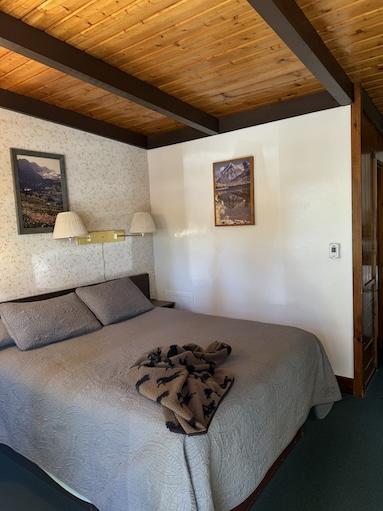
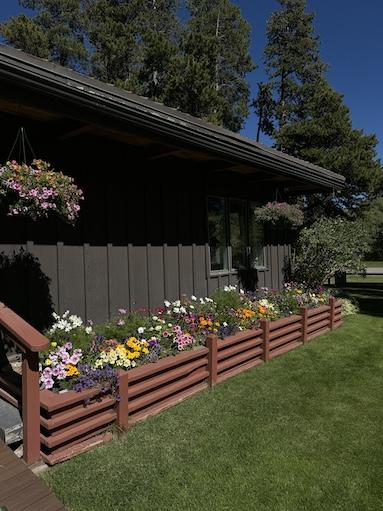
Glacier National Park offers various lodging choices close to popular hiking trails. You'll find options ranging from rustic campsites to comfortable lodges.
Many Glacier Hotel provides easy access to several scenic hikes, including Grinnell Glacier. This historic lodge sits on the shores of Swiftcurrent Lake, offering stunning mountain views.
Since Many Glacier Hotel was already booked, we opted to stay at Mountain Pine Motel in East Glacier. We could not have had a better experience! Not only is it very affordable, but the owner was super helpful in helping us plan our hikes. He has had the motel in his family for years and it is the perfect cozy cabin feel.
Here's a quick overview of accommodation types near hiking trails:
- Hotels/Lodges: Many Glacier Hotel, Lake McDonald Lodge
- Backcountry Chalets: Sperry Chalet, Granite Park Chalet
- Campgrounds: Many Glacier, Two Medicine, Rising Sun
- Motels: Mountain Pine Motel, Swiftcurrent Motor Inn
Remember to book your accommodations well in advance, especially during peak summer months. Reservations for lodges and campgrounds often fill up quickly.
I hope you enjoy your trip and feel free to comment with any questions you may have while planning!



No Comments